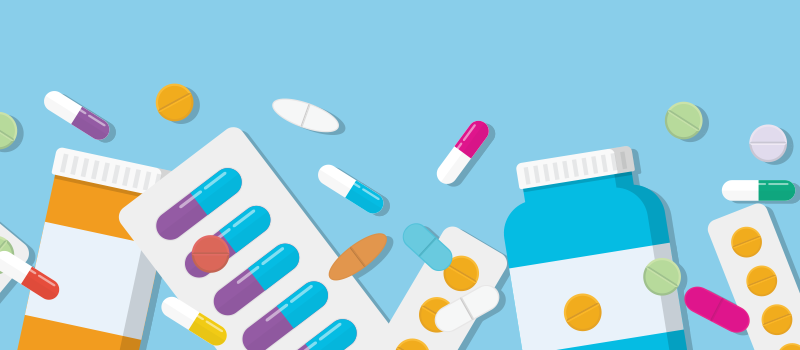What’s the Buzz
The Bee Healthy Blog
Semaglutide Tablets vs Injection: Which Is Best?

-
Studies have shown that semaglutide tablets (Rybelsus) are as good as semaglutide injections (Ozempic) for type-2 diabetes treatment.
-
While containing the same active ingredient (semaglutide), the different dosage forms of Rybelsus and Ozempic provide flexibility in personal preferences.
-
Additional factors such as cost and insurance coverage may also play a role in the choice between oral semaglutide versus injectable form.
Semaglutide is an antidiabetic drug that also has weight loss benefits. It is available as an oral formulation under the brand name Rybelsus and as an injectable medication under the brand name Ozempic. Please continue reading to find out the key differences between an oral semaglutide tablet and a subcutaneous semaglutide injection.
What are the dosage forms and doses of semaglutide?
Once-daily oral semaglutide
Semaglutide is available as an oral tablet under the brand name Rybelsus to help people with type-2 diabetes achieve adequate glycemic control. Rybelsus belongs to the drug class called glucagon-like peptide-1 (GLP-1) receptor agonists.
The dosage strengths of semaglutide oral tablets are 3 milligrams (mg), 7 mg, and 14 mg. Make sure you take Rybelsus exactly as directed to ensure the efficacy of this medication. You should follow the following dosing instructions and talk to your doctor or pharmacist if you have any questions.
-
The tablet form of semaglutide should be taken once a day, first thing in the morning, at least 30 minutes before breakfast, on an empty stomach. It is recommended that food be taken 30 to 60 minutes after the dose.
-
Use no more than half a glass (4 ounces) of plain water when taking Rybelsus.
-
You should not eat or drink anything or take other oral medications for 30 minutes after taking Rybelsus (oral semaglutide), as this can decrease the absorption of the medication and make it less effective.
-
This medication should be swallowed whole without cutting, crushing, or chewing it.
The recommended dosage of daily oral semaglutide is 3 mg once a day for 30 days, followed by 7 mg once a day for 30 days if needed for adequate glycemic control. After 30 days of being on the 7 mg per day dosing, the dose may be increased to 14 mg once a day if needed for additional glycemic control.
Do not take two 7-mg Rybelsus tablets to make a dose of 14 mg.
If you miss a dose of oral semaglutide, skip the missed dose and go back to your regular dosing schedule the next day. Do not double the dose of Rybelsus.
Once weekly injectable semaglutide for type 2 diabetes mellitus
Semaglutide is available in injectable form under the brand name Ozempic for the treatment of type 2 diabetes. The dosage strengths of the injectable version of semaglutide are 0.25 mg dose pen, 0.5 mg dose pen, 1 mg dose pen, and 2 mg dose pen. Similar to Rybelsus, Ozempic also belongs to the drug class called glucagon-like peptide-1 (GLP-1) receptor agonists.
Ozempic, the injectable version of semaglutide, is taken once a week, on the same day of the week every week. The injectable forms are to be injected subcutaneously (under the skin) of the upper arm, abdomen, or thigh. You can take injectable semaglutide at any time of the day without regard to meals.
The recommended starting dosage of the injectable version of semaglutide for diabetes is 0.25 mg injected subcutaneously once a week for 4 weeks, followed by 0.5 mg once a week for 4 weeks. The dose of injectable semaglutide can be further increased to 1 mg once weekly if needed to achieve adequate glycemic control. If additional blood glucose control is required, the dose can be increased after 4 weeks to 2 mg once weekly, which is the maximum recommended dose.
Once weekly injectable semaglutide for reduction in body weight
Semaglutide is available in injectable form under the brand name Wegovy for chronic weight management. The dosage strengths of injectable semaglutide for weight reduction are 0.25 mg dose pen, 0.5 mg dose pen, 1 mg dose pen, 1.7 mg dose pen, and 2.4 mg dose pen.
The injectable versions of semaglutide for reducing body weight are taken once a week, on the same day of the week every week. Once weekly, subcutaneous semaglutide should be injected subcutaneously (under the skin) into the upper arm, abdomen, or thigh. Semaglutide injections can be taken at any time of the day without regard to meals.
The recommended starting dosage of injectable semaglutide for facilitating weight loss is as follows:
-
Weeks 1 through 4: 0.25 mg subcutaneously once a week
-
Weeks 5 through 8: 0.5 mg subcutaneously once a week
-
Weeks 9 through 12: 1 mg subcutaneously once a week
-
Weeks 13 through 16: 1.7 mg subcutaneously once a week
-
Maintenance dose: 2.4 mg subcutaneously once a week from week 17 onwards.
If you cannot tolerate the maintenance dose of 2.4 mg, your doctor may keep you on 1.7 mg once weekly. Note that the 0.25 mg, 0.5 mg, and 1 mg doses of injectable semaglutide for weight management are starting doses and do not result in significant weight loss. The target doses of semaglutide injections for chronic weight management are 1.7 mg once weekly or 2.4 mg once weekly.
You can change the day of the week that you take the injectable versions of semaglutide as long as there are at least 48 hours (2 days) between consecutive doses. If you miss a dose of injectable semaglutide, take it as soon as you remember, within 5 days. If you are more than 5 days late, skip the missed dose and go back to your regular once-weekly dosing schedule. If you miss two or more doses, talk to your doctor before resuming injectable semaglutide. You may need to go back to a lower dose and gradually increase the dose again to prevent gastrointestinal side effects.
Check out Ozempic vs Wegovy for weight loss: key differences.
Are semaglutide pills the same as injection?
Both semaglutide pills and injections contain the same active ingredient. Both dosage forms have been studied for efficacy and safety outcomes and found to be equally effective and safe. However, the injectable forms are available under two brand name products, Ozempic for the treatment of type-2 diabetes and Wegovy for chronic weight management.
While both Rybelsus (semaglutide pill) and Ozempic (semaglutide injection) are used in type-2 diabetes patients to improve glycemic control, these two medications are not the same, meaning, they are not interchangeable. You should talk to your doctor if you want to switch from one drug product to the other.
Is semaglutide safe? What to know.
Are Ozempic tablets as good as injections?
There are no Ozempic oral tablets, as Ozempic is only available as an injectable medication. However, Rybelsus is the oral counterpart of Ozempic. Like Ozempic, Rybelsus also contains semaglutide as the active ingredient, and both medications are used to treat type-2 diabetes.
Studies have shown that semaglutide tablets (Rybelsus) are as good as semaglutide injections (Ozempic) for diabetes treatment. Find out about Ozempic for weight loss and if it really works.
Is oral semaglutide as effective as its injectable version?
Oral semaglutide is as effective and may be better tolerated than the injectable version. One study looked at the effects of once-daily oral semaglutide 14 mg as an add-on to basal insulin in people with type 2 diabetes mellitus. It was found that oral semaglutide was effective in reducing hemoglobin A1c, achieving glycemic control, and reducing body weight. The study concluded that once-daily oral semaglutide 14 mg is an effective oral treatment option with similar or better efficacy and similar tolerability compared to injectable versions of GLP-1 RAs (receptor antagonists). The adverse events, warnings, and precautions are also similar for both dosage forms.
What are the advantages of oral semaglutide 14 mg?
The main advantage of taking oral semaglutide is that it is taken by mouth. There is no need for injections. Therefore, there is no concern for injection site reactions. Oral semaglutide (Rybelsus) is also a good option for those who don’t like needles. The U.S. Food and Drug Administration (FDA) approved Rybelsus for the treatment of type-2 diabetes. Such individuals who are not yet on insulin or other injectable diabetes medications do not need to learn self-injection techniques if they take the oral formulation of a GLP-1 receptor agonist such as semaglutide instead of the injectable version.
What are the disadvantages of oral semaglutide?
The disadvantages of oral semaglutide include:
-
Once-daily dosing instead of once-weekly dosing for the injectable forms.
-
The need to take a semaglutide tablet on an empty stomach first thing in the morning and avoid eating or drinking anything or taking other medications for 30 minutes afterwards. In contrast, semaglutide injections can be taken without regard to meals at any time of the day.
-
Oral semaglutide is more likely to cause side effects such as nausea, vomiting, and abdominal pain.
-
Oral semaglutide formulations are not FDA-approved for weight management. Only Wegovy (semaglutide injections) are approved to facilitate weight loss. Learn more about Wegovy’s uses and side effects.
What is semaglutide used to treat?
Semaglutide belongs to a group of drugs called glucagon-like peptide 1 receptor agonists (GLP-1 receptor agonists). According to the American Diabetes Association, it stimulates insulin secretion from the pancreas and is used to improve glycemic control (blood sugar levels) in people with type- 2 diabetes mellitus.
Semaglutide is also an FDA-approved weight loss drug. It slows gastric emptying, increases feelings of fullness, and leads to decreased appetite. Semaglutide can, therefore, lead to statistically significant body weight reductions when used with healthy lifestyle changes such as diet and exercise.
Learn more about semaglutide for weight loss and how it works.
Daily oral semaglutide and once weekly injectable semaglutide have a generally similar efficacy and safety profile. The treatment differences (diabetes treatment versus weight loss treatment) and other considerations such as patient preference are therefore the deciding factors when selecting which semaglutide formulation to use. Learn about the best diabetes drug for weight loss.
Many people requiring early diabetes treatment are reluctant to initiate an injectable medication for fear of pain or injection site reactions. Healthcare providers may likewise prefer oral semaglutide or other oral antidiabetic drugs due to better patient adherence to treatment. Therefore, for people who are reluctant to start injectable semaglutide therapy, oral semaglutide represents a safe and effective choice.
However, the effectiveness of oral semaglutide depends on closely following the dosing instructions. You need to take the oral semaglutide tablet upon awakening, on an empty stomach, with no more than half a glass of water, and wait at least 30 minutes before eating, drinking, or taking other oral medications. The beneficial effects of oral semaglutide may not be obtained if these guidelines are not followed.
Therefore, some people may prefer the convenience of once-weekly dosing of subcutaneous semaglutide injections without the need to follow specific dosing instructions every morning.
Additional factors such as cost and insurance coverage may also play a role in the choice between oral semaglutide versus injectable forms. Find out how much weight loss injections cost.
Will insurance companies pay for Wegovy? Check out our blog to find out.
Find out more about FDA-approved weight loss pills and which is right for you.
Save on Your Weight Loss Medication with BuzzRx!
Manage your medication costs with BuzzRx coupons. Here are direct links to substantial savings for each medication:
Remember, these coupons are widely accepted at over 60,000 pharmacies, including major chains like CVS, Walgreens, and Rite Aid. Just present your coupon at the pharmacy to ensure you're getting the best possible price.
References:
-
https://dailymed.nlm.nih.gov/dailymed/drugInfo.cfm?setid=27f15fac-7d98-4114-a2ec-92494a91da98
-
https://dailymed.nlm.nih.gov/dailymed/drugInfo.cfm?setid=ee06186f-2aa3-4990-a760-757579d8f77b
-
https://dailymed.nlm.nih.gov/dailymed/drugInfo.cfm?setid=adec4fd2-6858-4c99-91d4-531f5f2a2d79
-
https://link.springer.com/article/10.1007/s13300-021-01034-w












SOCIAL